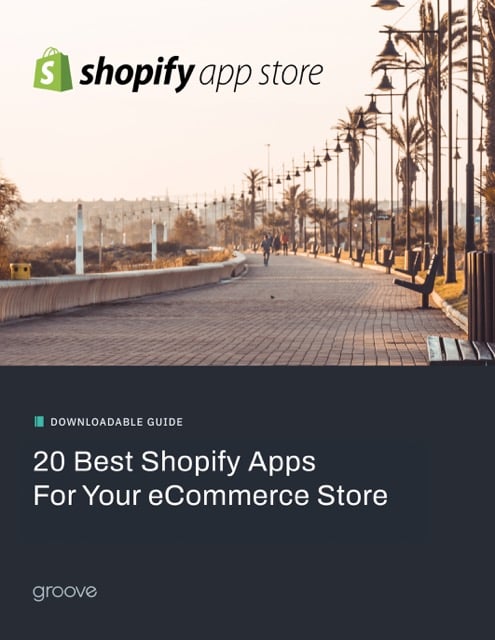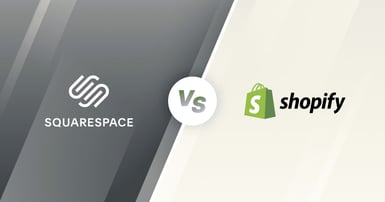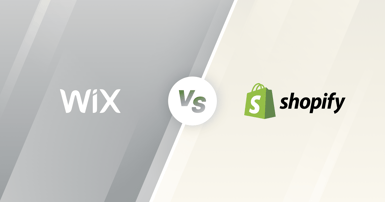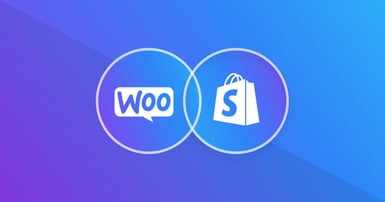As mid-market and enterprise eCommerce merchants know, choosing an eCommerce platform for your business can set you up for success (or failure). There are many Shopify Alternatives available on the market today that offer cloud-based website hosting to fit a variety of needs. Among them, Shopify Plus stands out as an industry leader that caters to mid-market and enterprise retailers. In this blog, we will discuss what kinds of retailers are suitable for Shopify Plus as well as some of the features that set it ahead of the pack.
Do I Need Shopify Plus?
There are many types of merchants that are a good fit for Shopify Plus, all for varying reasons. The number one indicator that you are ready for Shopify Plus is if you are already hosting your store through a standard Shopify subscription and need additional functionality. Examples of why you would need increased functionality include custom site templates, handling high order volume, and custom apps/integrations.
If features like these aren't needed by your organization, we recommend stopping here and checking out our comparison guides:
Shopify to Shopify Plus Migration
Because both services are offered by the same company, upgrading a current Shopify store to a Shopify Plus store is as easy as starting the subscription. Once the subscription is paid, you will instantly gain access to the advanced functionality that Shopify Plus offers.
Migrating from Legacy Platforms to Shopify Plus
Thanks to the Shopify Partner Program, it is almost just as easy to migrate your store from any other eCommerce platform such as Magento or SalesForce Cloud. As a Shopify partner, Groove Commerce offers store design, development and migration services to eCommerce retailers to allow them to get their newly redesigned site up and running perfectly without any backend or technical headaches.
When Shopify Plus Is Not The Best Fit
If you are a seller who is currently satisfied with the functionality of your site and do not encounter issues with high order volumes across multiple selling channels, then Shopify Plus may not be your best option. If you are looking to migrate to Shopify Plus in the future, now is the time to begin migrating your store to a standard Shopify subscription for when your order volume demands the upgrade.
Benefits of Shopify Plus
Reduced Technical Headaches
Shopify Plus gives merchants access to the highest-tier servers and support available across the platform. By taking advantage of this benefit, you can ensure that your site is as fast and as reliable as possible.
Potential customers are quickly off-put by poor page load times and clunky or completely nonfunctional checkout processes. By hosting all aspects of your store through Shopify Plus, you ensure that your website design, content, and checkout process will never give your customers a reason to give up on completing a transaction. Your checkout process will be affected by the payment gateway which you choose to leverage. Learn more from our blog "Choosing A Shopify Payment Gateway in 2022"
Fully Custom Templates
Building a fully customized website is a big step for many eCommerce retailers. As most merchants don’t have an in-house team of designers and developers.
In addition to custom “themes” or “templates” for your site, many sellers require custom integrations and applications that need to be designed, developed, and integrated. If your business falls into these categories, Shopify Plus is your only option within the Shopify ecosystem. While investment costs are associated with custom-developed websites, the ROI (return on investment) of these improvements is likely to shed any previous doubts about the undertaking.
Shopify’s “Liquid” Development Language
Shopify Plus uses Shopify’s proprietary template development language which they have named “Liquid.” Many eCommerce platforms have created their own development languages including BigCommerce’s own “Stencil”. Instead of explaining Shopify’s language ourselves, we will allow their partner blog to speak for them.
“Liquid, like any template language, creates a bridge between an HTML file and a data store—in our context, the data is of course a Shopify store. It does this by allowing us to access variables from within a template, or Liquid file, with a simple to use and readable syntax.
In Shopify, each Liquid file allows us to access certain variables without having to do any heavy lifting. For example, the product liquid template allows us access to all the details relating to the currently viewed product. Liquid, in turn, allows us to output this data without having to know anything about the actual product itself. These variables are known as template variables. You can also use Liquid to retrieve data that isn't made available to us. For example, you can ask Shopify to populate a variable you create with all the products in a particular collection.”
This means that Shopify Plus provides merchants with the ability to design their website themes with CSS and Javascript from the ground up to meet specific challenges and goals. By taking advantage of this feature, you can optimize your site for users to convert on any specific CTA (call to action) such as a product or promotion. For mid-market to enterprise brands who need to stay competitive in their niche, Shopify Plus allows merchants to give their customers a truly unique and personalized user experience.
Build Custom Mobile Experiences
In addition to building custom experiences for desktop screens, Shopify Plus allows merchants to design custom mobile breakpoints that match the exact look and feel of that on a desktop. Suppose that a user visits your website, bookmarks a specific category page, then decides to open that page on their mobile device at a later date. If they are met with a completely different user experience they may be jarred and confused as to how to find the exact item they saw previously.
By customizing your mobile experience, you can ensure that users are met with the same unified user interface and user experience no matter when and how they access your store.
Custom Integrations with Shopify Plus
As we discussed above, custom applications and integrations are major factors when a merchant is considering Shopify Plus. A custom integration involves importing and exporting data to and from BigCommerce in conjunction with additional services to add value to the customer or retailer.
For example, a PIM (Product Information System) allows a merchant to track inventory across multiple selling channels without the need for a team of employees to manually track when inventory or materials are arriving and when/how it is being shipped out. While this may seem like a standard feature, having the ability to map how your PIM interacts with your eCommerce channels is often a custom feature that must be implemented by an experienced developer.
Pricing
Shopify Plus pricing, reflecting the platform's comprehensive suite of features and enhanced support, starts at approximately $2,300 per month.
What sets Shopify Plus apart is its scalability and flexibility, offering businesses the infrastructure to grow without limitations. The platform's cost is variable and can increase based on various factors such as the volume of sales, additional functionalities, and integrations required by the business. This ensures that the pricing model is tailored to fit the unique needs and complexities of your operation.
How Can I Get Started With Shopify Plus?
So you have decided that Shopify Plus is the right platform for your business? Great - our team of designers and developers are experienced in designing and developing eCommerce stores on Shopify Plus. As a Shopify Partner, we will be able to get your new one-of-a-kind store along with any custom features you may need up and running while mitigating the technical headaches that you would otherwise encounter.
Still not convinced that Shopify is the right platform for your business operations? Check out our Review of Shopify Pros and Cons From A Development Perspective in which we dive deep into what makes Shopify great, as well as what features may cause issues for your business.
Interested in speaking to one of our eCommerce professionals? Reach out by clicking the button below!

E-BOOK
20 Best Shopify Apps For Your eCommerce Store
About the author
Spencer Flaherty is an eCommerce blogger who loves exploring the latest trends and technologies in the industry. From chatbots to virtual reality, they cover it all.
Subscribe to the Groove Newsletter
Get the latest updates and insights straight to your inbox





